Description of heliotis, its properties and scope
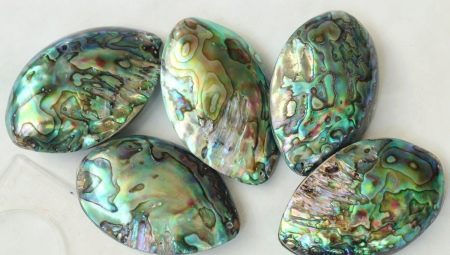
The depths of the sea contain many amazing living organisms, plants and minerals with specific traits and characteristics that are unusual for organisms, plants and minerals found on land.
The list of deep-sea rarities also includes heliotis - the shell of the sea gastropod mollusk. This mineral shell, which serves as a house for him, has very specific color characteristics, which puts heliotis on a par with other precious gifts of the sea: pearls and corals.


Description
Heliotis is a marine organism that lives at depths of up to 35 meters, which makes it accessible to collectors. The jelly-like invertebrate body is enclosed in a strong mineral shell, consisting of two bundles. The mollusk has a standard anatomical structure and uses a "leg" to move along the seabed.
The outer outline of the heliotis shell resembles the shell of a human ear. It was this similarity that led to the fact that they began to call it "Abalone". The size of the shell can reach 20-25 cm.
The capabilities of this marine life allow it to firmly attach to any surface. In order to separate it, special tools and considerable effort are used.

Heliotis is of several types, some of which are considered extremely rare and protected by the laws of the countries in which they are found.
The main distinguishing feature of "Abalone" is the unique combination of colors that make up its color. This multi-color effect is achieved thanks to a special mineral coating that separates the light that hits it across the entire light spectrum. Because of this property, the heliotis shell is also called the "rainbow stone".
In addition to its unusual color properties, heliotis is prized for its ability to form pearls inside a shell. The pearls grown by this mollusk are large and surprisingly beautiful.
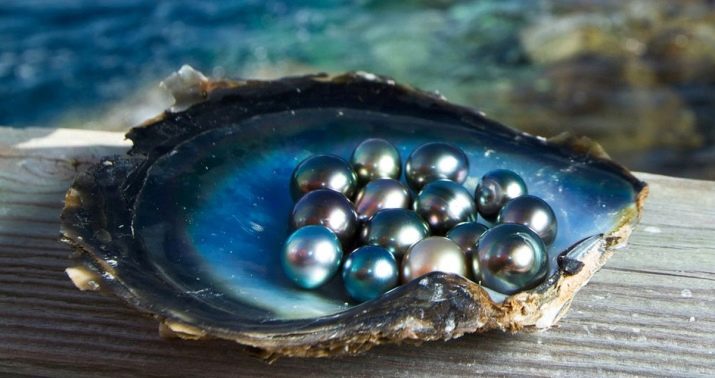
Habitat
"Abalone" lives in the warm coastal waters of the seas and oceans, washing some continents and islands. It can be found off the coast of Australia and South America. Commercial shellfish fishing is also carried out in the region of Japan and off the southern shores of Asia.
The heliotis shell is not found in any of the regions of the Russian coast. The waters that wash over Russia are too cold for this inhabitant of the depths.
For this marine life, the average temperature indicators of the water in the area in which it lives are of great importance.

Properties
The unusual color of the shell of this mollusk has given rise to many superstitions and signs attributing to it magical abilities and the ability to influence various aspects of human life.
Practice shows: a mineral formed as a result of chemical processes is unable to have any effect on the physical or mental state of a person.
However, one should not completely exclude the presence of some effect. It has long been known that the physical and psychological state of a person can directly depend on the factors of his own or external suggestion.
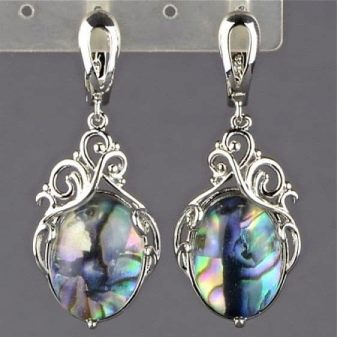

If a person believes that a mineral has this or that influence on him, and he is firmly convinced of this, then sooner or later, he will begin to feel the consequences of this phantom influence. As a result, this will in one way or another affect the person's condition.
At the moment, there is no scientific evidence of the magical properties of heliotis. There are only theories about the possible presence of special characteristics of the chemical composition of the shell, which can be used for medicinal purposes.
However, such conclusions have not yet influenced the promotion of the mineral to the masses as a therapeutic agent.

Application
The "rainbow stone" is prized for its unusual color and hardness. Jewelers all over the world are working on the manufacture of various products from the heliotis shell. On sale you can find necklaces, earrings, brooches, pendants and other jewelry, completely or partially consisting of the shell mineral.
The pronounced properties of the strength of this material put products made from it, an order of magnitude higher than ordinary costume jewelry. In addition, the hardness of the mineral makes it difficult to process, which requires the use of specialized tools and special technologies. The combination of these factors determines the formation of high prices for final products.


Who is it suitable for?
Decorations made from the shell of this mollusk look expensive and of high quality. They are perfect for girls with green or blue eyes, and also go well with other natural pearl jewelry.
Earlier it was believed that Abalone shell products were sensitive to the zodiac sign of the person who wears them.


To date, the theories associated with this have disappeared into oblivion, as it has been scientifically proven that the astrological discipline describing the influence of the zodiacal constellations was based on the idea that the universe revolves around the earth.
After humanity became aware that the earth is not the center of the universe, and it was on this that the science of the signs of the zodiac was based, it can be concluded that there is no magical connection between the constellations and products made of sea mineral.

How to distinguish a fake?
The value of jewelry made from heliotis determines the emergence of technologies for the production of fakes that imitate the properties of this material.
There are several criteria by which you can distinguish a fake from a mineral of natural origin:
- color spectrum;
- strength;
- drawing.
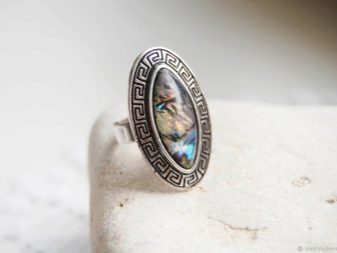

The unusual pearlescent color of the shell is formed under the influence of various factors: pressure, the composition of sea water, the nutrition of the mollusk, the properties and abilities of its body, etc. Their presence ensures the formation of a mineral material with unique characteristics.
Artificial methods of producing this material do not give such a result.
It has been observed that clams raised in captivity are unable to grow their shells with the same color as those raised in their natural environment.


Counterfeits of this material are made from substitute materials using various technological tricks. Glass and plastic can be used as a base.
When using glass, special glazed paints are applied to it, forming a mother-of-pearl overflow. This imitation is rather difficult to distinguish from the original, since the gloss of the glass and paintwork is similar to the natural gloss of the "rainbow stone".

In order to indicate the difference, it is necessary to draw a sharp object along the surface of the decoration. The paint applied to the counterfeit will scratch, revealing the base material of the product.
The glass counterfeit is inferior to the original in terms of strength. When dropped, even from a small height, it instantly bursts and falls apart. The product made of natural mineral is extremely strong and resistant to shocks and drops.
Plastic fakes are of two types: with paint applied over the product and with the addition of a tinted mixture to plastic when it is in a liquid state.

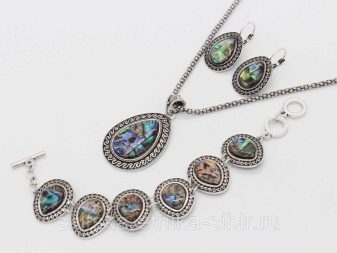
In both cases, the product is fragile and too light. In order to distinguish it from a fake, it is enough to weigh it in your hands. A piece of jewelry made from a natural mineral will weigh significantly more than its plastic counterpart.
When purchasing any heliotis product in uncontrolled sales locations, you should be especially careful. Often counterfeits containing elements that imitate heliotis are sold on the coast in private shops. The sale of such a product is intended for tourists who cannot recognize a fake.

Care rules
Jewelry and other products that have parts of the "Rainbow Stone" require careful handling and appropriate care.
Avoid holding the product near bulky metal objects that could damage it. It is unacceptable to carry it in the same pocket with iron coins or keys.
Although heliotis mineral is a very durable material, frequent contact with other hard objects that have sharp edges can result in scratches, chips and even cracks.
Over time, the glossy surface of the product may become dull. This is due to the appearance of many micro-scratches.
In this case, it is necessary to carry out preventive polishing of the jewelry.


The polishing of a product from a heliotis shell is carried out in several stages.
- The surface is treated with very fine sandpaper. When polishing with an abrasive material, it is important to be careful not to damage or spoil the frame in which the Rainbow Stone is enclosed.
- The grain size of the sandpaper is reduced by an order of magnitude. The polishing is repeated. During the entire process, it is necessary to wet the polished surface with water in order to prevent heating.
- Continue sanding with Goya paste. The surface is rubbed with a paste until a matt plaque appears. Polishing is done with felt or cotton material (the rags should be made from natural ingredients, as synthetic materials can scratch the glossy surface).
- After completing the preventive polishing of the product, rinse it thoroughly with water to remove the remaining components of the polishing paste.

The frame in which the processed heliotis is placed is made of precious metals: gold, silver or platinum. These materials can fade over time. To maintain their shine, regular polishing is required, which should be done by a qualified jeweler.
See the next video for more on Heliotis.








